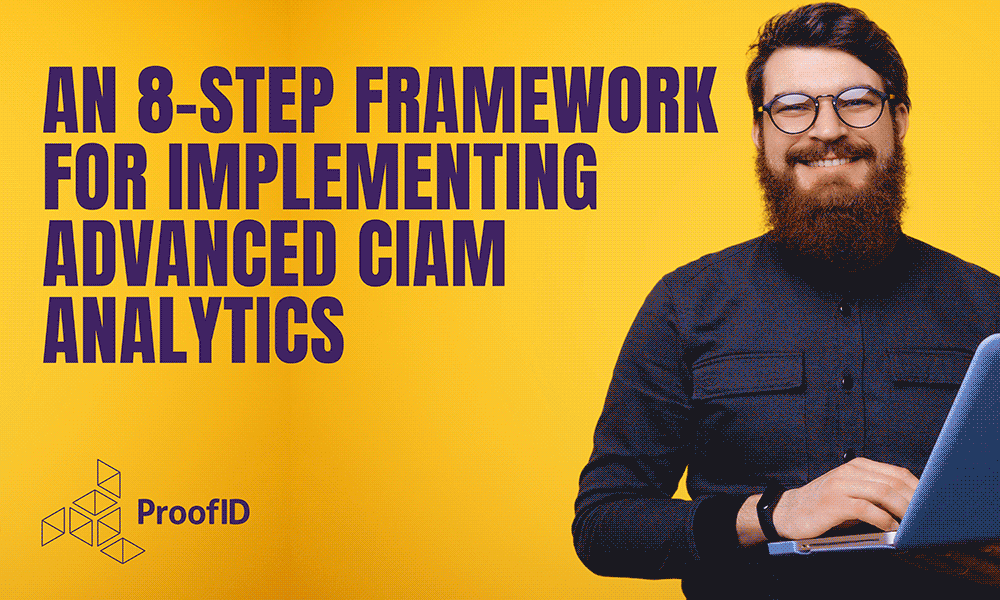In the UK, according to the Center for Retail Research 26.55% of all retail sales are conducted online with 18.8% in North America, so providing an entirely flawless and secure ecommerce experience is unavoidably critical for brands selling online. Authenticating and registering customers is the front door to your store, and the more straightforward, consistent, and trustworthy the experience, the more likely customers are to repeat it.
Research shows us that 90% of customers would rather leave a site than go through a ‘traditional’ registration system. 42% of customers have abandoned an account application due to friction, and 30% of customers loyal to a brand would stop doing business with it after one bad experience. Well-designed forms, minimal data collection and as few clicks or screens as possible say something about your brand and, let’s be honest, you only get one chance to make a good first impression.
Of course, there are different forces at play too, your chief marketing officer (CMO) will have an entirely different set of priorities to your identity architect. The CMO wants a personalized experience for customers, while the identity architect prioritizes security and compliance. Bridging the gap between the two requires expert collaboration and a comprehensive approach that can be easily followed by both to optimize customer experience. It’s a three-step process…
CONSUMER-FOCUSED REGISTRATION AND AUTHENTICATION
Implementing a Customer Identity and Access Management (CIAM) solution tailored to customer use cases, with modern authentication options and API-driven integration capabilities.
CONSUMER-FOCUSED REGISTRATION AND AUTHENTICATION
Implementing a Customer Identity and Access Management (CIAM) solution tailored to customer use cases, with modern authentication options and API-driven integration capabilities.
IDENTITY ORCHESTRATION
Employing a GUI-driven approach to the CIAM solution development and deployment to allow rapid prototyping, A/B testing, and easy integration with non-identity workflows.
IDENTITY ORCHESTRATION
Employing a GUI-driven approach to the CIAM solution development and deployment to allow rapid prototyping, A/B testing, and easy integration with non-identity workflows.
CIAM ANALYTICS
Using analytics to gain insights into the customer journey, identify friction points, analyze data by geolocation and devices, and make data-driven decisions to improve the registration and authentication processes.
CIAM ANALYTICS
Using analytics to gain insights into the customer journey, identify friction points, analyze data by geolocation and devices, and make data-driven decisions to improve the registration and authentication processes.
Keeping track of the core data is straightforward via a CIAM dashboard to provide an uncomplicated way to view valuable insights into user behavior, which can help formulate better ways of doing things. At a granular level it’s easier to see each stage of registration from username submission, through credentials and submissions, as well as recording journey progress and status. The start of the journey timestamped, the screen name and journey point, the customer’s IP and geolocation and the browser user details used in the process. You can then analyze which screens take the longest to complete, which take multiple attempts, where the common abandonment points are, and if there is any correlation between those events and the geo-location or devices used. All the information forms the basis of feedback and refinement and a way to optimize the process.
By following the eight-step framework, you can be sure that your customer experience is continuously optimized…
- Map the current registration flow and identify key performance indicators (KPIs).
- Implement CIAM and analytics to capture relevant data.
- Analyze the gaps, identify abandonment points, and pinpoint areas for improvement.
- Re-evaluate the registration flow and data collection strategy based on insights gained.
- Re-map and streamline your process flows.
- Identity the best forms of data capture.
- Test and learn from different approaches, measuring their impact.
- Implement the optimized processes, measure the results, and report on the outcomes.
- Map the current registration flow and identify key performance indicators (KPIs).
- Implement CIAM and analytics to capture relevant data.
- Analyze the gaps, identify abandonment points, and pinpoint areas for improvement.
- Re-evaluate the registration flow and data collection strategy based on insights gained.
- Re-map and streamline your process flows.
- Identity the best forms of data capture.
- Test and learn from different approaches, measuring their impact.
- Implement the optimized processes, measure the results, and report on the outcomes.
When there is so much choice online the tasks that seem like just ‘back-office administration’ can make the biggest difference in attract and retaining customers. If your registration and authentication process for customers is cumbersome and annoying, your customers have many other places to shop that aren’t yourselves. It should be a priority to work through the process and continually refine and optimize it if you want to grow your revenues and differentiate your brand in a crowded digital marketplace.
To learn more about CIAM and how you can leverage it to improve your customer journey, read our guide, ‘How CIAM balances security & CX for a frictionless customer journey’.
Research sources | Crazy Egg, Liminal, PWC
Be the first to hear about news, product updates, and innovation from proofid









